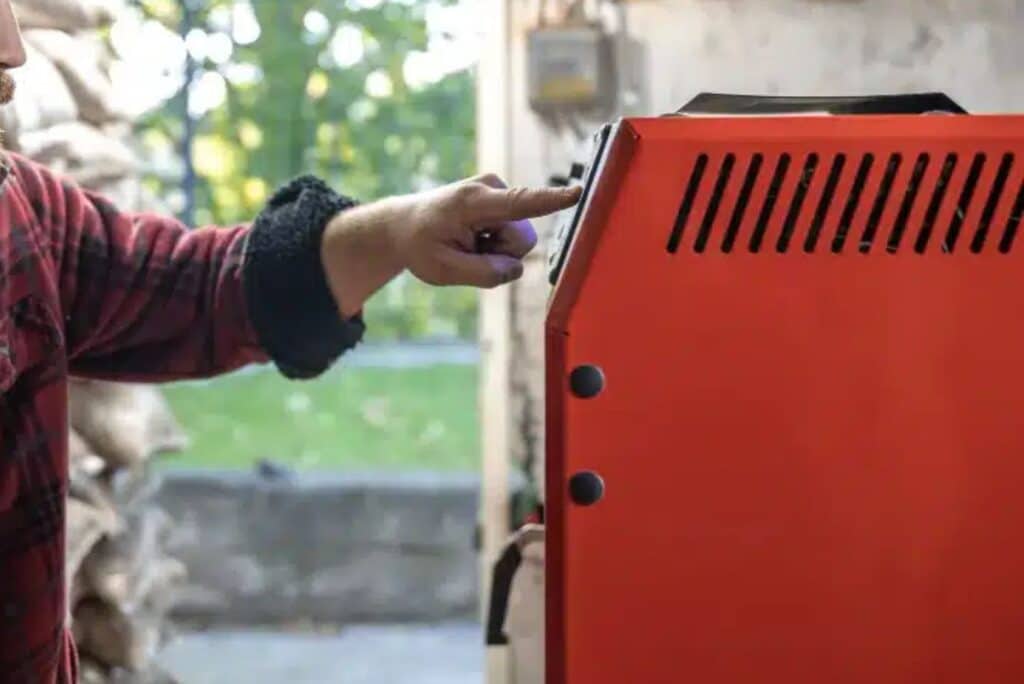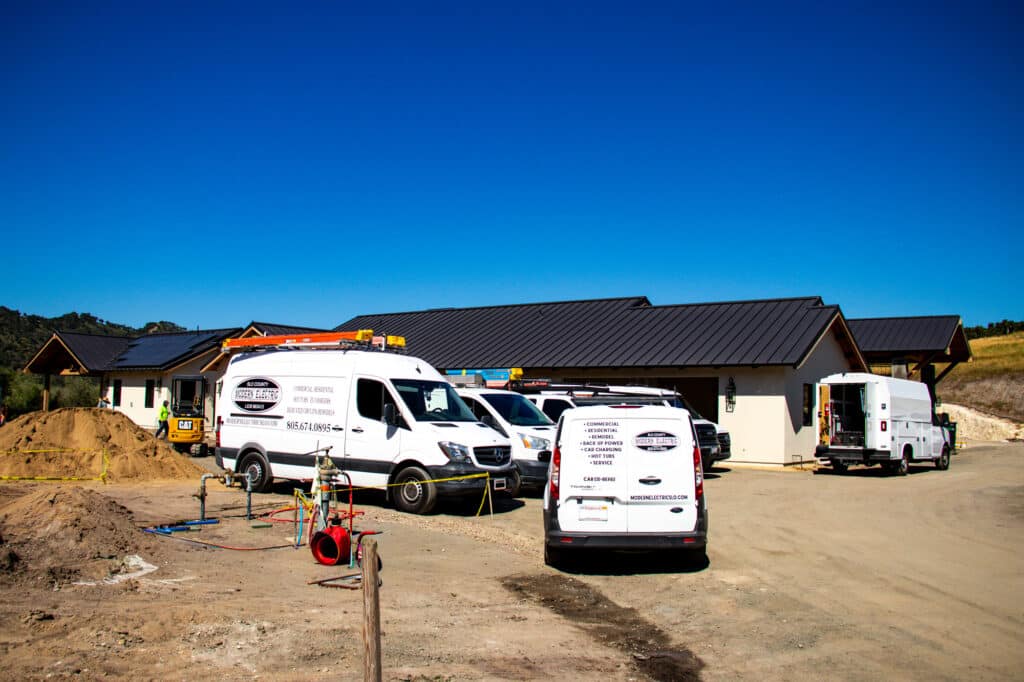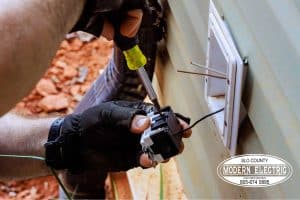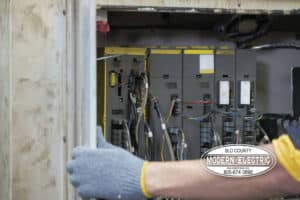Generator placement is not a cosmetic choice. It is a safety decision that protects your home from fire and carbon monoxide while keeping your equipment running efficiently in every season. Correct generator clearance helps you meet code, pass inspection, and avoid expensive do overs.
This guide explains the rules that matter, the differences between standby and portable units, and how to choose a location that balances safety, code compliance, and installation cost. When planning generator placement, it is important to consider several important factors such as safety, accessibility, airflow, protection from weather, noise levels, and proximity to utilities.
Installation costs can vary significantly depending on generator size, installation complexity, and local regulations, so a professional assessment is recommended to determine the overall cost and ensure proper, code-compliant installation.
If you are planning a project in San Luis Obispo, these principles apply, and your local rules may add more detail.
What is generator clearance
Generator clearance is the minimum open space you must maintain around a generator to provide safe airflow, limit heat and exhaust hazards, and preserve access for service and emergency responders.
National standards such as NFPA 37, which specifically addresses stationary combustion engines, set baseline spacing from structures and openings, and manufacturers add model specific requirements for the sides, ends, wall spacing, and overhead. Local jurisdictions may further increase these minimums.
Why generator placement matters

Safety
Exhaust contains carbon monoxide. If the unit sits too close to openings or in a pocketed area, gases can collect and reach the interior of the home. Fumes from the generator can cause health hazards, and proper clearance is essential to prevent exposure to hot exhaust gases and fumes.
Exhaust gases can also seep into the home through small cracks, voids, or openings around windows, doors, and other structural penetrations. Heat from the exhaust and enclosure can also ignite nearby combustibles.
Performance and longevity
Generators need cool, clean intake air and room to expel hot air. Tight spaces, alcoves, or heavy vegetation can restrict airflow and raise operating temperatures. That can shorten the life of the machine and create nuisance shutdowns.
Compliance and resale
Clearances are verified during permitting and inspection. Meeting standards keeps the warranty intact and helps when you sell the home since unpermitted or non compliant work can slow a transaction.
How far should a generator be from the house
Standby generators
For most homes, a standby unit should meet these widely referenced minimums:
- Openings Keep at least 5 feet from any opening in a wall, including operable windows, doors, vents, window wells, crawl space vents, and soffit intakes. This spacing reduces the risk of carbon monoxide entering the structure.
- Walls Many manufacturers allow 18 inches to a stationary noncombustible wall based on third party fire testing. Combustible walls may require more distance. Always verify the exact rule for your model and follow local code.
- Service space Maintain 3 feet of clear space at the front and both ends of the unit to allow proper airflow and safe maintenance.
- Overhead Allow 5 feet of clear space above the generator. Do not install beneath any deck, balcony, roof projection, or overhang.
Never install a generator in an enclosed space, as this can trap exhaust and create serious safety hazards.
These distances work together. For example, a unit may sit 18 inches from a block wall but still must be 5 feet from the nearest opening in that wall.
Portable generators
Portable units play by different rules because they vent raw exhaust and often run in storms when homes are sealed tight. Place a portable generator outside on level ground at least 20 feet from any door, window, or vent, and direct the exhaust away from the structure. Install battery powered or plug in carbon monoxide alarms with battery backup inside the home.
Generator clearance requirements and the codes that govern them
You will see three layers of authority in almost every installation:
National standards
NFPA 37 covers stationary engine placement and includes the widely cited 5 foot minimum from openings in walls. The standard permits closer spacing to a wall only when specific fire resistance or manufacturer tested conditions are met. For a complete and updated list of NFPA 37 requirements, visit the official NFPA website. Always consult the updated list of NFPA 37 requirements to ensure you have the most current information.
Manufacturer instructions
Manufacturers publish installation manuals with precise clearance numbers for each side, the ends, and the top. Generac’s guidance includes 5 feet from openings, 18 inches to a noncombustible wall when allowed, 3 feet at the front and ends, and 5 feet overhead, plus warnings about alcoves, fences, and vegetation that can trap exhaust. Follow the manual for your exact model.
Local rules
Local building departments can add requirements that exceed national standards. Many jurisdictions also reference the International Mechanical Code for separation from outdoor air intakes. Some areas add property line setbacks. A permit is generally required before installing a standby generator due to the complexity of electrical and gas work involved. Always confirm with your local authority before finalizing a location.
Where to put a generator outside
The best location balances three factors: safety, cost, and convenience.
Pick a spot with clean airflow
Avoid corners, alcoves, courtyards, and dense landscaping. Keep shrubs trimmed so nothing blocks the sides, ends, or top. Maintain the manufacturer’s side and end clearances and the 5 foot overhead space. Never install a generator in the garage or any enclosed space, as this poses serious safety hazards such as carbon monoxide poisoning.
Respect openings and intakes
Keep 5 feet from any operable opening in walls. Maintain at least 10 feet horizontally from outdoor air intake openings for HVAC supply air systems as required by the mechanical code. Do not direct exhaust toward HVAC equipment such as outdoor condensers or window units. Be sure to seal and caulk around pipes and other penetrations to prevent exhaust gases from entering the home.
Mind utilities and fuel
Keep the generator clear of gas regulators and metering. Many local guides call for about 5 feet from a gas regulator vent and 10 feet from the fill or vent of a propane tank. Maintain the required distance from the gas meter as specified by local codes to ensure safe operation and compliance. Your local inspector will confirm exact numbers.
Consider property lines
Some local codes limit how close a generator can be to the property line. A common requirement is no closer than 5 feet, though some places require more. Check your local ordinance before you pour a pad.
Think about noise and neighbors
Modern enclosures are quieter than old steel boxes, yet placement still matters. Keep the unit away from bedroom windows when possible and avoid placing it in a location that projects sound to a neighbor’s patio.
Plan for service access
Technicians need room to remove panels and lift components. Keep the 3 foot service space at the front and ends clear year round and avoid placing the unit behind locked gates without providing access.
When choosing a generator location, also consider security to prevent safety hazards and ensure reliable operation.
Home generator setback requirements
Setbacks protect neighbors and public rights of way. Your city or county may regulate setbacks from property lines, streets, or easements. A frequent local rule is five feet from a side or rear property line, while some communities require larger distances or special screening in front yards. Because setback rules vary widely, coordinate with your local building department during the site survey to ensure a complete site survey is conducted and all setback requirements are fully met.
Manufacturer example Generac distances
Generac’s published guidance highlights the clearances that many homeowners encounter during permitting and inspection:
- At least 5 feet from openings in walls such as windows, doors, and vents
- 18 inches from a noncombustible wall where allowed by testing and local code
- 3 feet at the front and ends for service access and airflow
- 5 feet of overhead clearance
- Never under a wooden deck or platform
These manufacturer instructions supplement, and do not replace, local code. Always follow the Installation Manual for the exact model on your property.
Portable vs standby placement at a glance
Portable generators
- Place outside on a firm surface
- Maintain at least 20 feet from doors, windows, and vents
- Point the exhaust away from buildings
- Use carbon monoxide alarms inside the home
Standby generators
- Meet NFPA 37 spacing from openings and follow the model specific clearances around the unit
- Confirm setbacks from property lines and separation from gas regulators, air intakes, and propane equipment
- Provide safe, code compliant fuel and electrical connections through permitted installation
These two categories share the same safety goal but use different distances and procedures.
Optimizing generator performance and longevity
To get the most out of your home standby generator, it’s important to focus on several key factors that directly impact its performance and lifespan. Proper airflow is essential as your generator needs unobstructed air intake and exhaust to operate efficiently and avoid overheating. Make sure the area around the unit is always clear of combustible materials like dry leaves, shrubs, and trees, as these can pose a fire risk and may violate local codes.
Routine maintenance is another critical step. Regularly check and replace air filters to maintain the effectiveness of your generator and prevent dust or debris from clogging the system. Inspect the exhaust system to ensure it is installed in accordance with the manufacturer’s guidelines, which helps prevent dangerous carbon monoxide from seeping into your home’s structure.
By keeping the installation site free from overgrown vegetation and following all local codes, you not only protect your property but also extend the life of your standby generator. These best practices help maintain safety, reduce the risk of fire, and ensure your generator is ready to deliver reliable power when you need it most.
Best practices for generator maintenance
Consistent maintenance is the foundation of safe and reliable home generator operation. Always follow the manufacturer’s instructions for servicing and repair to keep your unit in top condition and to comply with local codes.
Key maintenance tasks include checking oil and fuel levels, inspecting the exhaust system for cracks or leaks, and ensuring the generator is installed at the proper distance from windows, doors, and other openings to prevent exhaust from entering your home.
Proper airflow around the generator is crucial. Keep the area free from vegetation, debris, and any obstacles that could block air movement or create a fire hazard. Regularly monitor noise levels, especially if your generator is near neighbors, and take steps to minimize disturbance by maintaining the unit and its enclosure.
It’s also important to verify that your installation meets all local codes and regulations, as requirements can vary by location. If you’re unsure about any aspect of maintenance or compliance, consult a professional to ensure your generator remains safe, effective, and ready to provide power during outages. By staying proactive with maintenance and adhering to all codes, you protect your investment and your family’s safety.
Common mistakes to avoid
- Setting the unit too close to windows or doors. Maintain 5 feet from all openings.
- Installing under an overhang or deck. Overhead clearance matters. Never install beneath a deck and maintain 5 feet above.
- Pointing exhaust toward HVAC equipment or intakes. Keep distance from outdoor air intakes as required by the mechanical code and avoid directing exhaust toward condensers or window units.
- Ignoring property line setbacks. Many towns restrict placement near side yards. Verify setbacks early to avoid moving the pad later.
- Treating portable and standby rules as the same. Portable units belong far from the structure and openings. A rule of 20 feet reduces risk.
Professional installation and code compliance
A licensed electrician coordinates the site plan, load calculations, fuel connections, permits, inspections, and final testing. Many local guides also require signage at the service equipment that identifies the optional standby power source. Inspectors will look for correct clearances, proper electrical and gas work, and compliance with labeling and access requirements.
Local story. We recently helped a homeowner near Bishop Peak choose a safer location after the initial plan placed the unit in a courtyard that trapped exhaust. By shifting the generator to a side yard, increasing distance from nearby windows, and adjusting landscaping for airflow, we passed inspection on the first visit and reduced noise in the bedroom.
Where we work

SLO Modern Electric installs and services standby generators across the Central Coast.
Service area: Generator installation in San Luis Obispo. Serving Atascadero and nearby areas. Homes near Morro Bay receive the same careful site survey and code coordination.
Install and Maintain Generators with SLO Modern Electric
Correct generator clearance is the foundation of a safe and reliable installation. The right distances protect your family from carbon monoxide, reduce fire risk, and give your equipment the airflow and access it needs. By combining NFPA 37 guidance, the manufacturer’s manual, and local rules, you will pass inspection and get the long service life you expect. When you are ready for a site visit and a clear plan, SLO Modern Electric can handle the entire process from survey to final inspection with placement that fits your property and budget. Give us a call today!
Get Quote
Tell us a little about your project and we’ll get back to you with a fast, honest estimate. We’re here to make your life easier, not harder.




